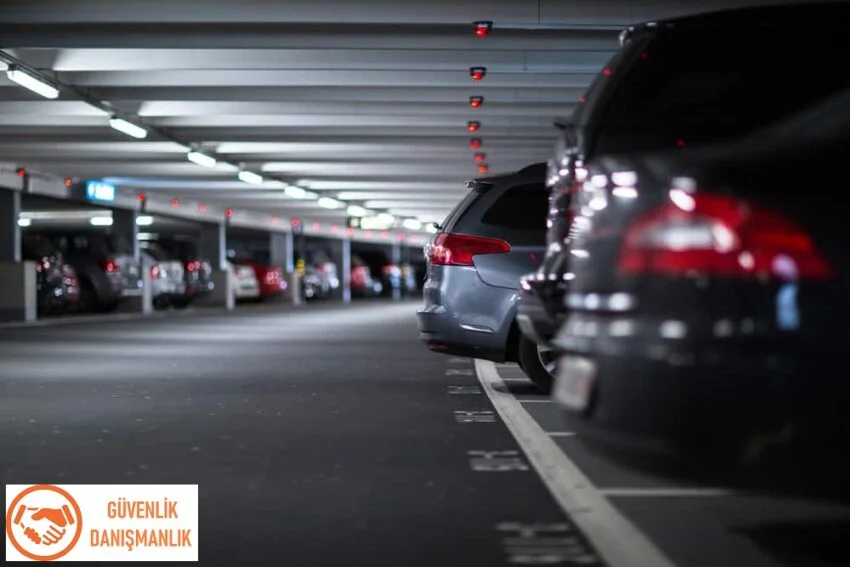General information about CO Detection Systems.
Parking garage CO detection systems continuously measure the levels of carbon monoxide (CO) in the air by detecting the presence of CO gas in open or enclosed parking garages and sound an alarm when dangerous levels are reached. These systems are designed to prevent the risk of CO poisoning in parking garages.
CO gas is a harmful gas emitted by vehicle exhausts and can be dangerous for humans. CO gas is odorless and colorless, so its presence in the air can go unnoticed and create a danger. CO levels can be high in parking areas, so CO detection systems are important for detecting this dangerous gas and sounding an alarm.
Parking CO detection systems consist of CO sensors and transmitter units. CO sensors are placed in different areas of the parking area and continuously measure the CO levels in the air. The transmitter units collect data from the sensors and send it to a control unit. When CO levels reach dangerous levels, the control unit sounds an alarm and ensures that necessary actions are taken.
Parking CO detection systems are important for the safety of both parking employees and users. These systems quickly detect CO gas leaks and allow for appropriate measures to be taken to prevent danger. Additionally, they ensure that parking businesses and managers are cautious about CO gas leaks and can quickly respond in dangerous situations.
Parking CO detection systems are typically installed in the entrance, exit, and other strategic areas of the parking area. These systems can also be connected to the parking area’s ventilation system. This allows the ventilation system to work by expelling the CO gas outside before the CO levels reach dangerous levels.
Parking CO detection systems can also be integrated with building management systems. This allows the building management system to sound an alarm and take necessary measures when CO levels reach dangerous levels. Additionally, these systems can detect malfunctions in CO sensors and remind users to perform sensor maintenance.
Parking CO detection systems offer an important solution to increase the safety of parking areas. These systems help businesses, employees, and customers take necessary precautions to ensure their safety. Additionally, these systems offer benefits such as preventing CO gas leaks, energy savings, and reducing environmental impact.
Parking CO detection systems can also be used in various industrial applications. Particularly, monitoring CO levels in parking lots where high-emission vehicles are used is necessary. These systems are commonly used in commercial and industrial enterprises, public institutions, and hospitals’ parking lots.
Parking CO detection systems consist of sensors that are easy to use and have low maintenance costs. The sensors are usually mounted on the ceiling of the parking lot and continuously measure CO levels. If the measured CO levels reach a programmed alarm level, the sensor will trigger an alarm, and the system will automatically take necessary measures.
Parking CO detection systems also help businesses save energy. For example, if CO levels are below normal levels, the ventilation system can be automatically turned off. This saves energy and reduces the business’s carbon footprint.
In conclusion, parking CO detection systems offer an important solution to increase parking lot safety and reduce environmental impacts. These systems help businesses, employees, and customers take necessary precautions to ensure safety. Additionally, they offer advantages such as energy savings and reduced environmental impacts.
Is CO (Carbon Monoxide) Gas Harmful to Human Health?
Yes, CO (carbon monoxide) gas is highly dangerous for human health. CO gas is a colorless, odorless, and tasteless gas that can pose a threat to humans if found in high levels in the air. The effects of CO gas on human health depend on the gas concentration, duration of exposure, and the amount of gas inhaled.
CO gas enters the bloodstream and reduces the oxygen-carrying capacity, causing the body’s tissues to receive insufficient oxygen, leading to heart attacks, brain damage, and even death. Prolonged exposure to CO gas can also lead to chronic illnesses.
Sources of CO gas include exhaust fumes, fires, gas stoves, heaters, heating systems, and some other industrial activities. Therefore, to minimize exposure to CO gas, we must be careful about gas leaks in our homes and workplaces and regularly maintain them. Additionally, we can take precautions against danger in environments where CO gas concentration is high by using CO detection systems.
How Does a CO Sensor Work?
CO (carbon monoxide) sensors are designed to detect CO gas. These sensors are called electrochemical sensors and use chemical reactions to measure CO gas in the surrounding air.
CO sensors typically consist of three main components: an electrode, an electrolyte, and a reference electrode. The sensor’s electrode catalyzes the redox reactions of CO gas in the electrolyte present in the air. As a result of these reactions, an electric current is generated in the electrolyte, and the CO gas concentration becomes measurable by the sensor.
CO sensors are sensitive to various factors that can affect the speed and intensity of electrochemical reactions. The sensitivity of sensors may vary depending on environmental factors such as temperature, humidity, the presence of oxygen, and other gases. Additionally, CO sensors have a limited lifespan and may need to be replaced with a new one after a certain period.
CO sensors are used in many applications such as gas stoves, heating systems, fire alarms, and other safety systems. These sensors emit a danger signal by giving an alarm when the CO gas concentration rises above a certain level. In this way, human safety is ensured by taking precautions against the danger of CO gas.
Types of Sensors Used in CO Applications.
CO (carbon monoxide) sensors are generally of two main types: electrochemical sensors and optical sensors.
- Electrochemical sensors: These types of sensors detect CO gas by using its electrochemical reaction with oxygen in the air. The electrodes inside the sensor produce an electrical current when CO gas combines with oxygen in the air, and this current is measured by the sensor. Electrochemical sensors can detect low ppm levels of CO and are typically used in homes, offices, industrial plants, and vehicles.
- Optical sensors: These types of sensors detect CO gas by using its optical properties in the air. Sensors use the principle of light emission or light absorption to detect CO gas. Optical sensors can have higher sensitivity compared to electrochemical sensors and are typically used in industrial applications.
Both types of sensors are effective in detecting CO gas, but electrochemical sensors are more commonly used and cheaper. Sensor selection may vary depending on the application and requirements.
CO detector installations.
CO (carbon monoxide) sensors are usually mounted near CO sources in parking lots, typically at ceiling level or on walls. CO sensors in parking lots are used to measure CO concentrations generated by vehicles, motorcycles, or other sources with exhaust emissions.
The placement of sensors depends on the size and layout of the parking lot. Parking lots can be open or enclosed and their layouts can vary. However, CO sensors are generally located at the entrance or center of the parking lot. In addition, sensors should be located away from areas where wind flow occurs in the parking lot as this can cause inaccurate measurement of CO concentration.
The installation of CO sensors must be done in compliance with local regulations and guidelines. In addition, regular maintenance and calibration of the sensors must be carried out. This ensures that the sensors function properly and can detect potential CO hazards in the parking lot.
The mounting height of CO sensors in parking lots can vary depending on the area where the CO sources are located and the characteristics of the sensor. However, CO sensors are generally mounted at ceiling level or at a height of 1.5-2 meters.
This height allows the sensor to be located in an area where CO gas is dense and measurements can be made accurately. In addition, the location where sensors are mounted on the ceiling or wall can vary depending on the size and layout of the parking lot.







